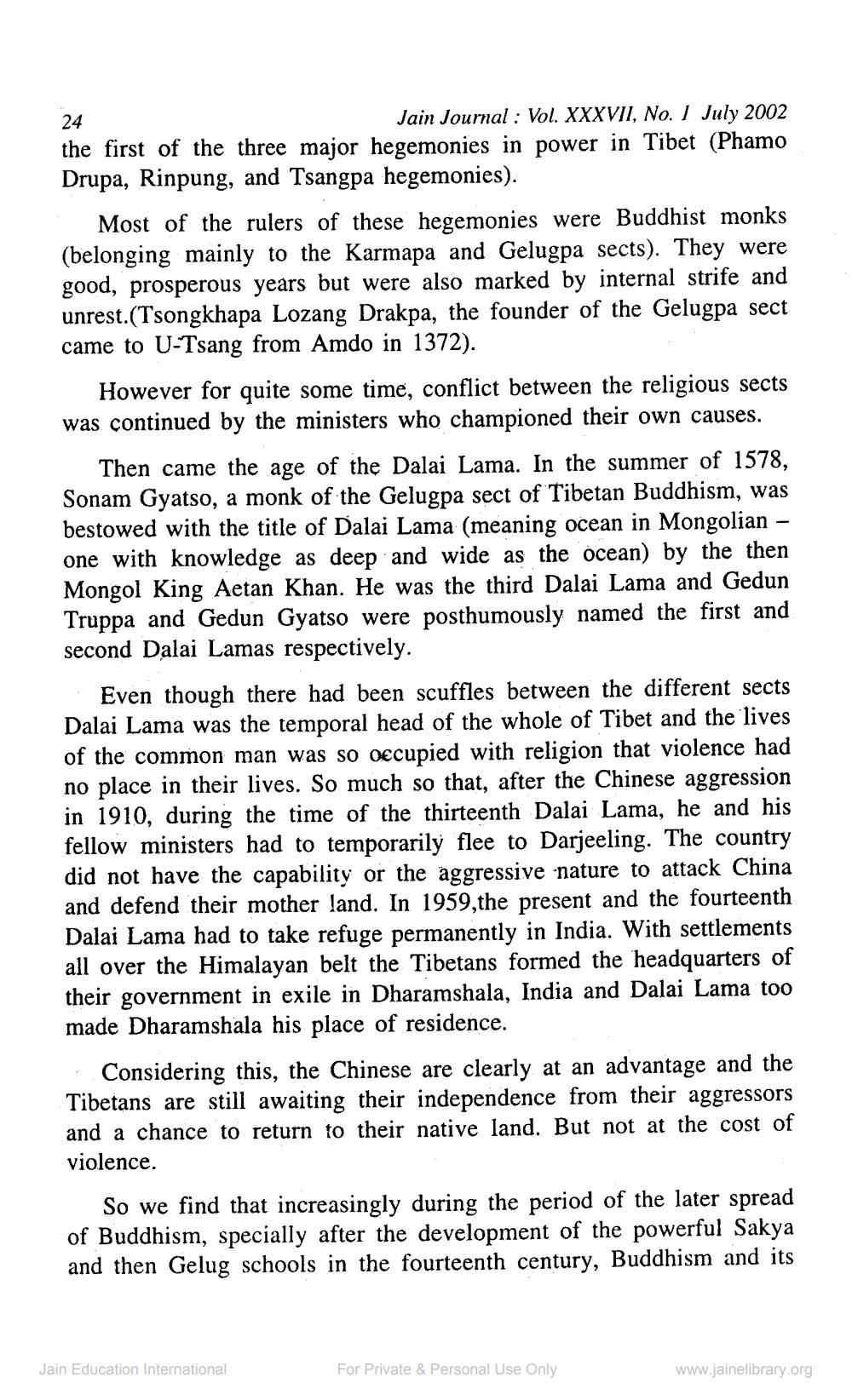________________
Jain Journal : Vol. XXXVII, No. 1 July 2002 the first of the three major hegemonies in power in Tibet (Phamo Drupa, Rinpung, and Tsangpa hegemonies).
Most of the rulers of these hegemonies were Buddhist monks (belonging mainly to the Karmapa and Gelugpa sects). They were good, prosperous years but were also marked by internal strife and unrest.(Tsongkhapa Lozang Drakpa, the founder of the Gelugpa sect came to U-Tsang from Amdo in 1372).
However for quite some time, conflict between the religious sects was continued by the ministers who championed their own causes.
Then came the age of the Dalai Lama. In the summer of 1578, Sonam Gyatso, a monk of the Gelugpa sect of Tibetan Buddhism, was bestowed with the title of Dalai Lama (meaning ocean in Mongolian - one with knowledge as deep and wide as the ocean) by the then Mongol King Aetan Khan. He was the third Dalai Lama and Gedun Truppa and Gedun Gyatso were posthumously named the first and second Dalai Lamas respectively.
Even though there had been scuffles between the different sects Dalai Lama was the temporal head of the whole of Tibet and the lives of the common man was so occupied with religion that violence had no place in their lives. So much so that, after the Chinese aggression in 1910, during the time of the thirteenth Dalai Lama, he and his fellow ministers had to temporarily flee to Darjeeling. The country did not have the capability or the aggressive nature to attack China and defend their mother land. In 1959,the present and the fourteenth Dalai Lama had to take refuge permanently in India. With settlements all over the Himalayan belt the Tibetans formed the headquarters of their government in exile in Dharamshala, India and Dalai Lama too made Dharamshala his place of residence.
Considering this, the Chinese are clearly at an advantage and the Tibetans are still awaiting their independence from their aggressors and a chance to return to their native land. But not at the cost of violence.
So we find that increasingly during the period of the later spread of Buddhism, specially after the development of the powerful Sakya and then Gelug schools in the fourteenth century, Buddhism and its
Jain Education International
For Private & Personal Use Only
www.jainelibrary.org




